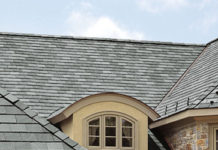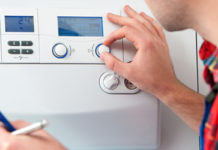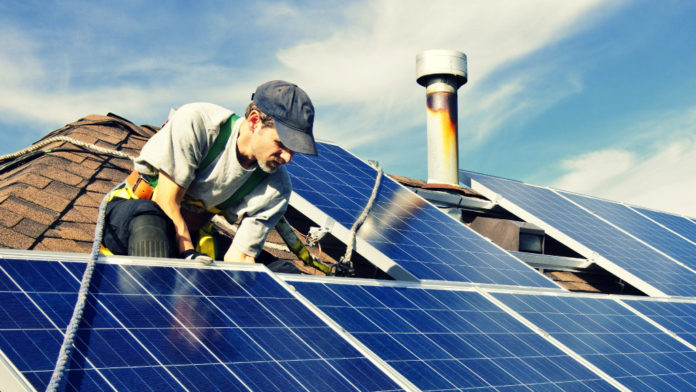Ballpark estimate: $10,000 – $40,000 for a quality and cost effective solar panel system installation.
We’ve all seen the black and chrome rectangular solar panels on the roofs of houses or other buildings but most people probably don’t realize exactly what’s going on up there. The simple answer is that with current technology, sunlight is converted directly into electricity, thus allowing you to provide free power to your home, as long as the sun is shining. The electricity being produced can be stored in batteries for those times when the sun isn’t shining and in many communities the electric utility (the company that sends you your electric bill) will actually buy any excess electricity your solar panel system produces, making it possible to reduce your electric bill down to 0 during peak periods.
Good quality and high efficiency solar panel systems are not cheap to purchase, but they will pay for themselves in electricity cost savings over time. Currently, there are a number of government programs that provide tax credits to help offset the cost of installing solar panels. This is because the country as a whole benefits every time a homeowner installs a solar panel system. Solar energy has two distinct advantages over burning fossil fuels to create electricity, it is clean (producing no pollutants that can be released into the air and water) and it is renewable—as long as the sun comes up, at least!
Types of Solar Panel Systems
Solar panels have three basic components: the panels themselves, the mounting system, and the control system (including batteries). As explained above, the panels convert solar energy that comes from the sun and turns it directly into electricity, the control system then collects the electricity and converts the low voltage output of the panels to the higher voltages needed for household usage. The more efficient the solar panel, the more electricity it can produce per square foot. The mounting system also impacts efficiency; cheaper stationary systems are less efficient than more expensive mounts that allow the panels to move throughout the day to face the sun. All of these factors impact cost.
Exploring Solar Panel Costs
Because so many factors come into play with solar panel installations, there are really nine different combinations possible (3 types of panels times 3 types of mounts). Based on cost savings alone, it is a best bet to purchase the most efficient system you can afford up front; this will give the greatest savings in the long term and quickest return on investment. For example, you can have a high quality, 5.1-kilowatt solar panel system installed on a home in Massachusetts for between $18,000 and $25,000; this range takes into account the shape and exposure of the roof as well as suitability for installation. Considering all tax credits and other incentives, the final cost to the consumer averages about $14,000. This system, installed in the Boston area, should save about $35,900 over 20 years, based on the price of electricity and average usage in a four-person household. This means the break-even point for your investment will occur in less than seven years.
Prices will be similar in other parts of the country for the same type of system, but return on investment can vary tremendously. Phoenix, Arizona, for instance, will offer many more sunny days than Massachusetts. In addition, many homes in the greater Phoenix area were built in the past 20 years,
making solar panel installation very efficient. In this case, you may be able to install a larger system and still be able to achieve break even in 5 to 7 years because you can sell more electricity during peak sunshine. Overall cost savings could top $50,000 in 20 years, making solar electric systems very popular in the southwest. Purchasing less expensive systems up front may end up costing more, due the longer timeframe it will take to reach your breakeven point, as well as the smaller ROI over the long term because of the lower overall efficiency.
Where to Start?
If you are ready to get your share of the cost savings while also contributing to a cleaner, more sustainable planet, solar is a great idea to consider. One place to start is with Energy-Save, this is an online service to help connect consumers with solar contractors who can recommend the right system for you and provide a price quote. Contractors often have quick access to government programs and incentives as well, making sure you get the best cost estimate available. Be sure to talk with at least three contractors and check with the Better Business Bureau in your area to check for prior customer complaints. You may also want to look for a rating service such as Angie’s List to find actual ratings for contractors before setting out on such a large investment. One important side note is that repairs to the existing structure and roofing material may need attention before installing the panels. As with any booming business (and solar panel systems are booming) be sure to do your homework before rushing into a project with the first sales person who writes you an estimate!
Bottom Line
In the end, the cost of installing solar panels is likely to pay off well for any homeowner who lives in an area that has plenty of free sunlight available. Also remember to check with your electric company to see if they will buy back extra power during your system’s peak production, since this will make a huge difference in the long term cost effectiveness of solar panels. Keep an eye on government programs that help offset costs. These programs may not last forever, so don’t hesitate if you are serious about a solar project.
Most of all, remember what a great investment you are making in the future of our natural resources, and that you are leaving a legacy for your children, and their children. Clean air, clean water and sustainable energy make a pretty nice gift, even without the wrapping paper and bow.













































